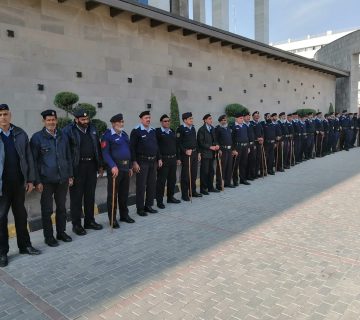KARACHI, June 02: In a dramatic turn of events, the Pakistani currency experienced a historic recovery of 9.5%, or Rs27, against the US dollar in a single day in the open market on Thursday. This remarkable drop eliminated the significant gap of Rs27 that had existed between the interbank and open market exchange rates, bringing the domestic currency on par with the interbank rate at around Rs285/$.
Until a few months ago, the spread between the two markets ranged between Rs1-3. The interbank market also witnessed a steady performance, maintaining its two-week high. According to data from the State Bank of Pakistan (SBP), the currency edged up 0.03%, or Rs0.09, to Rs285.38/$ on Thursday.
The widening gap in the rupee’s value between the interbank and open markets prompted the International Monetary Fund (IMF) to recommend that the government “focus on the restoration of proper foreign exchange market functioning.” An expert explained that the IMF seeks to establish a similar exchange rate for the rupee against the US dollar in all markets.
However, the Exchange Companies Association of Pakistan (ECAP), another trade body of currency dealers in the open market, reported a recovery of only 4%, or Rs12, bringing the exchange rate to Rs299/$.
Currency dealers told The Express Tribune that the open market remained highly volatile throughout the day, eventually closing trade at around Rs300/$. On Wednesday, the currency had closed at Rs311/$, according to ECAP.
President of the Forex Association of Pakistan (FAP), Malik Bostan attributed the significant correction of Rs27 in the open market to the central bank’s decision to allow commercial banks to purchase US dollars from the interbank market to settle international payments made through credit cards by their clients. Bostan claimed to have suggested this solution in a meeting with Finance Minister Ishaq Dar and SBP Governor Jameel Ahmad.
Previously, commercial banks were buying an average of $10 million per day from the open market to settle international credit card payments. This high demand had driven the currency to a record low of Rs312/$ in the open market on Tuesday.
Bostan emphasised the need for the government to closely monitor illegal hawala-hundi operators who could potentially exploit the use of credit cards. He expressed concerns that the cost reduction of international payments made through credit cards by a substantial 9.5% or Rs27 per dollar could strengthen the trend of international online shopping and hawala-hundi transactions. To balance the demand and supply of US dollars in the country, Bostan called on the government to impose taxes on luxury goods purchased online while exempting essential items.
However, Bostan reassured the public that the open market would offer US dollars and Saudi riyals at reduced prices to individuals undertaking the Hajj and Umrah pilgrimages.
Financial experts had previously predicted another round of rupee depreciation, ranging from 5% to 10% (Rs300-310/$) in the interbank market, in an effort to narrow the gap between the interbank and open markets before the official expiration of the IMF loan program on June 30, 2023.
ECAP, General Secretary, Zafar Paracha had predicted a massive correction in rupee-dollar parity in the market after the central bank allowed banks to purchase dollars from interbank market on Wednesday.
He said the currency would recover by around Rs20-25 over the next couple of days, including a Rs15-20 on Thursday (June 1).
The substantial correction in the rupee-dollar parity in the market led to a notable 2.30% drop, or Rs5,200, in gold prices to Rs229,000 per tola (11.66 grams) in Pakistan on Thursday. The All Pakistan Sarafa Gems and Jewellers Association (APSGJA), which calculates the price of imported gold commodities for local markets using the open market exchange rate, reported the price reduction despite a $7 increase per ounce (31.10 grams) to $1,967 in the international market.




No comment